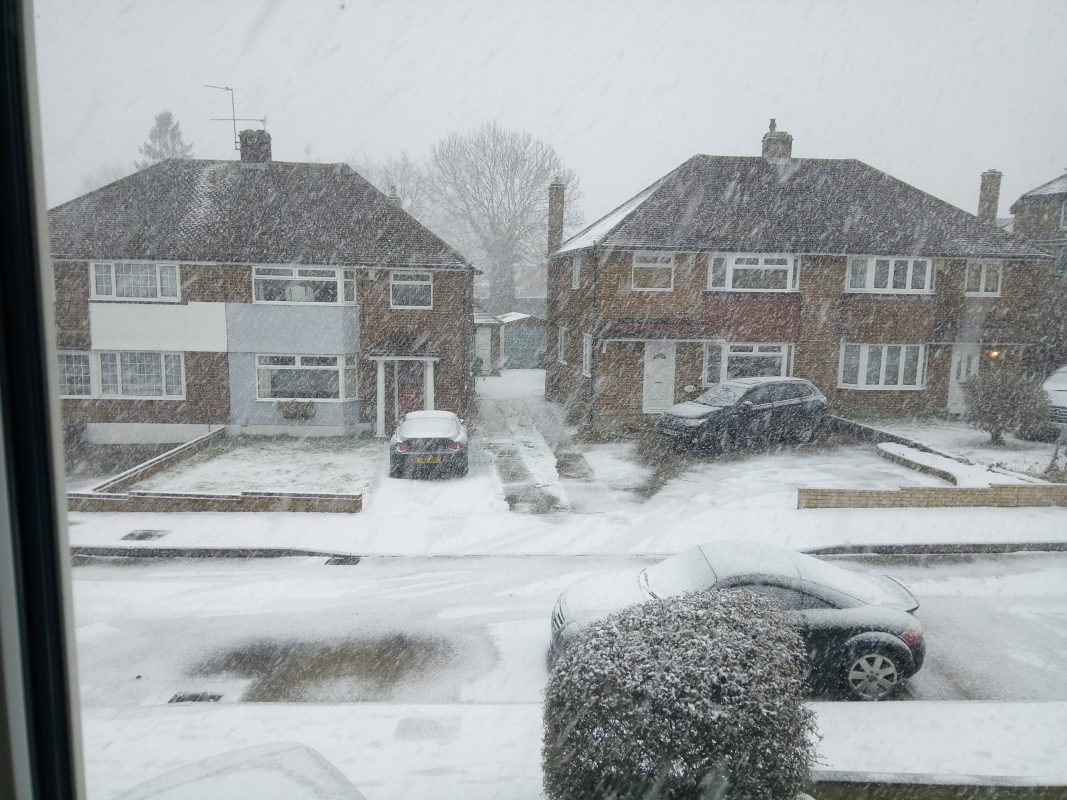Does it snow in England? Where are you most likely to see the white stuff? I’m an English local, and I’m going to answer all your questions in this blog post!
Snow in England: it happens, but not often!
I remember as a child (growing up in London), we used to have a few days of settled snow at least every winter, often two or three times a year.
These days? We sometimes get a few days at some point in the winter, but sometimes entire years will go without it (although there’s usually still snowfall, it just doesn’t really settle).
I now live in Devon in the South West of the country, and due to our coastal location, we barely see the stuff!
That being said, the north does experience more snowfall.
Read on, as I delve into the likelihood of snow in England, when and where you’ll have the most chance of snow, and what to do if it does occur on your winter trip to the country (spoiler: us locals panic!).
Does It Snow in England?
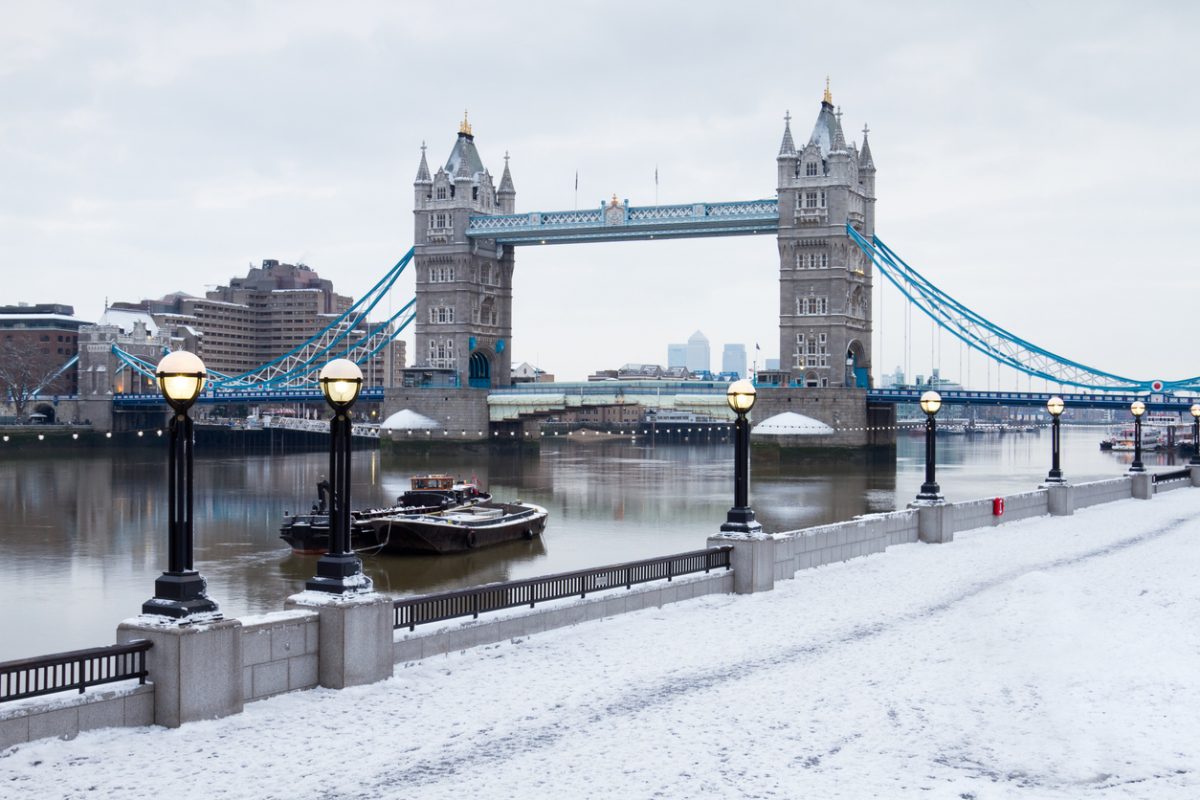
Technically yes, it does snow in England.
But the amount of snowfall and its frequency – and whether it settles – varies a lot.
I’ve only found statistics for the whole of the UK (source: Met Office) and Scotland skews these significantly, but the country as a whole gets on average 23.7 days of snowfall each year. However, Scotland’s average is 38.1 days of snowfall, which makes England’s average significantly less.
The data that I found also only goes up to 2010!
Now, this is just the days when snow falls. So technically, one snowflake could make this a “day of snowfall”.
On average, there are 15.6 days per year in the UK when snow is on the ground, but again, Scotland skews this. So the average of days when snow is on the ground in England is much lower.
And where is the snow that does settle in England? Generally around the Pennines, England’s only “mountains” (they’re more like hills!).
Now, all this being said, there was quite a lot of snow in December 2022 and January 2023, including in the South East and limited parts in the South West (although not in coastal Devon and Cornwall where I live – we rarely ever get it!).
We also had a bit of sleet later on in the winter. But, like always in England, the snow lasted for a few days and then melted away!
When Does It Snow in England?
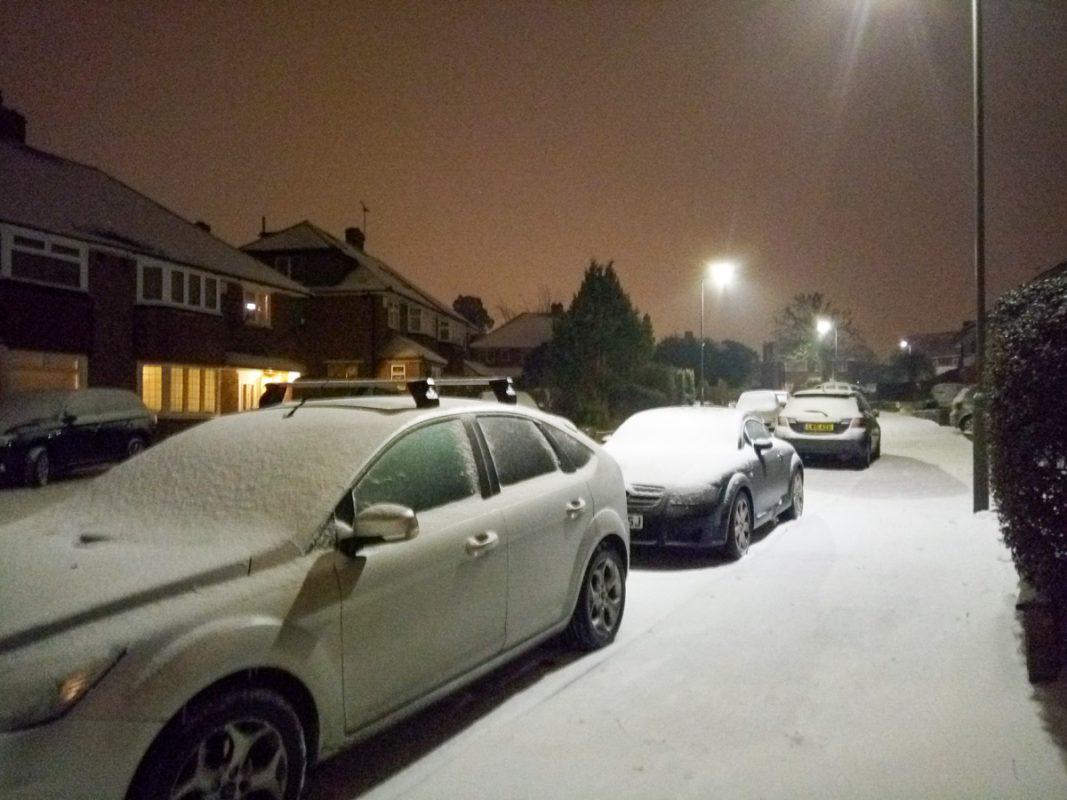
So, when can you expect snow in England?
In all honesty, there’s the chance for a cold snap any time from November to March. I’ve experienced random patches of snow at all times in the coldest months of the year!
Snow in England in November
November’s when the cold weather starts to arrive in England, and yes, there’s a small chance of snow.
That being said, in the cities and the south (including London), snow is quite rare this early in the year.
Frost is definitely a possibility, and there can be icy conditions on roads.
Check out my list of things to do in the UK in November here!
Snow in England in December

December marks the true onset of winter in England – but snow is still rare.
In the North Pennines and the high grounds of the Peak District and Yorkshire Dales, there’s more of a chance, but it’s still more likely to not have snow.
That being said, there was a lot of snow in December 2022 in many parts of the country, including London; I’ve never heard the question “are we going to get a white Christmas?” asked more (Northern Ireland and Scotland technically did, as there was limited snowfall – although it snows in Ireland even less than in England usually).
Snow in England in January
January probably has the most likelihood of snowfall – it’s the coldest winter month.
There was snow in January 2023 in most of the country (including London), and it stuck around for longer in the northern regions.
We didn’t have any where I live by the Devon seaside, although just a few miles up the road, on higher land, there was a smattering.
Snow in England in February
Again, there’s a moderate chance of snow in February, although my birthday’s on the 15th and I can’t remember ever having a white birthday!
That being said, I am a Southerner who lives by the beach – there’s more chance of snow in higher land and in the north of the country. Still not much chance in London, though!
Snow in England in March
As spring approaches, snowfall in England gradually begins to ebb.
March sees transitional weather, with warmer days starting to melt away the winter’s remnants.
But that being said, I distinctly remember a snow day on 1st March a few years back!
And actually, during my research with Met Office, I discovered that it is slightly more likely to snow in March than in December. Who woulda thought it?
Spring sometimes likes to tease us at the end of February and then the wintry showers and chilly temperatures return – so while snow in England in March isn’t likely, it is a possibility!
Check out my guide to London in March here.
Why does it rarely snow in England?
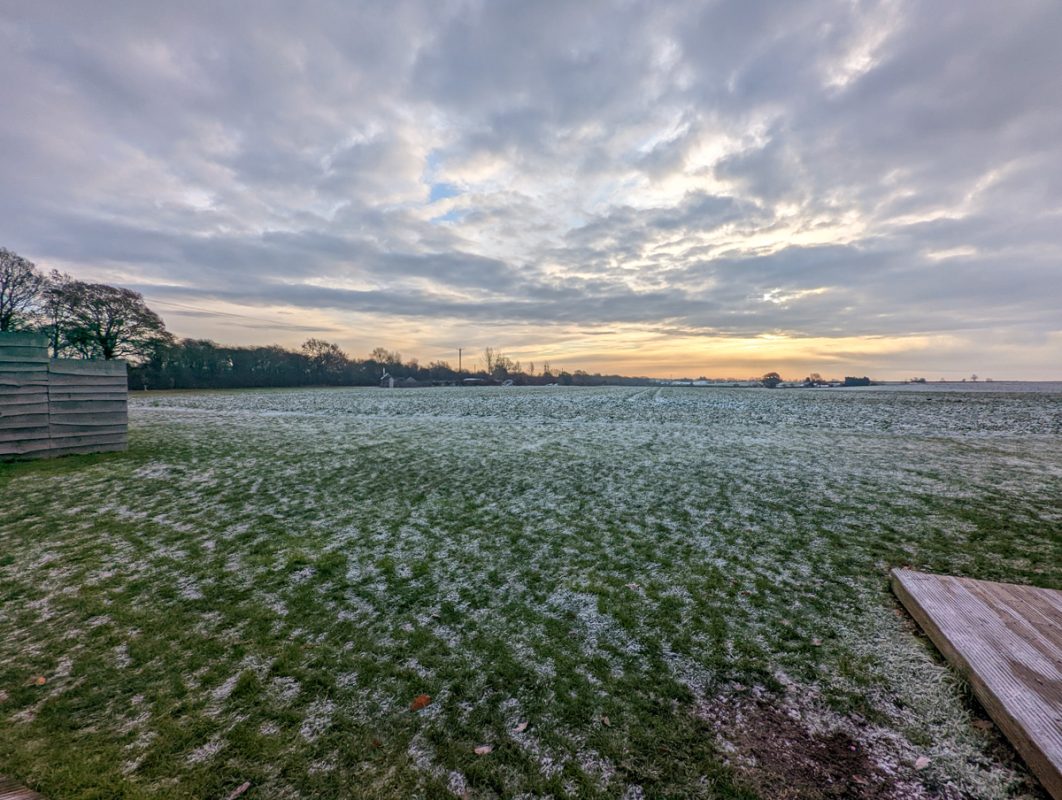
So why does England not see much snow, despite sitting fairly north on the world map?
(In fact, it’s on the same latitude as parts of Canada and Russia!).
England has a rather unique geographical position and climatic influences.
The nation is an island, surrounded by water and directly under the influence of the Gulf Stream, a warm Atlantic Ocean current.
This maritime climate system pumps in warm air, holding the winter temperatures at bay and keeping them relatively mild.
The Gulf Stream, originating near the tropical Atlantic, carries warmth all the way to the North Atlantic.
England, being on the western edge of the European continent, receives this warming influence directly, which prevents winter temperatures from plummeting to levels that could support prolonged periods of heavy snowfall.
This is also why the South West peninsula is warmer than other parts of the country in the winter – we stick right out into the Atlantic.
Interestingly, the gulf stream is also why it doesn’t get as cold as you might expect in Iceland (although there’s still plenty of snow, as it’s much further north) and why Tromsø in Arctic Norway is always relatively mild (but again, there’s still lots of snow here!).
Also, snow rarely settles in London and other English cities.
This is because of the urban heat island effect – cities and large towns, abundant with concrete and asphalt, hold on to heat more efficiently than the countryside.
This stored heat often raises the temperature in the urban centre enough to turn potential snowfall into rain or sleet.
Where does it snow in England?
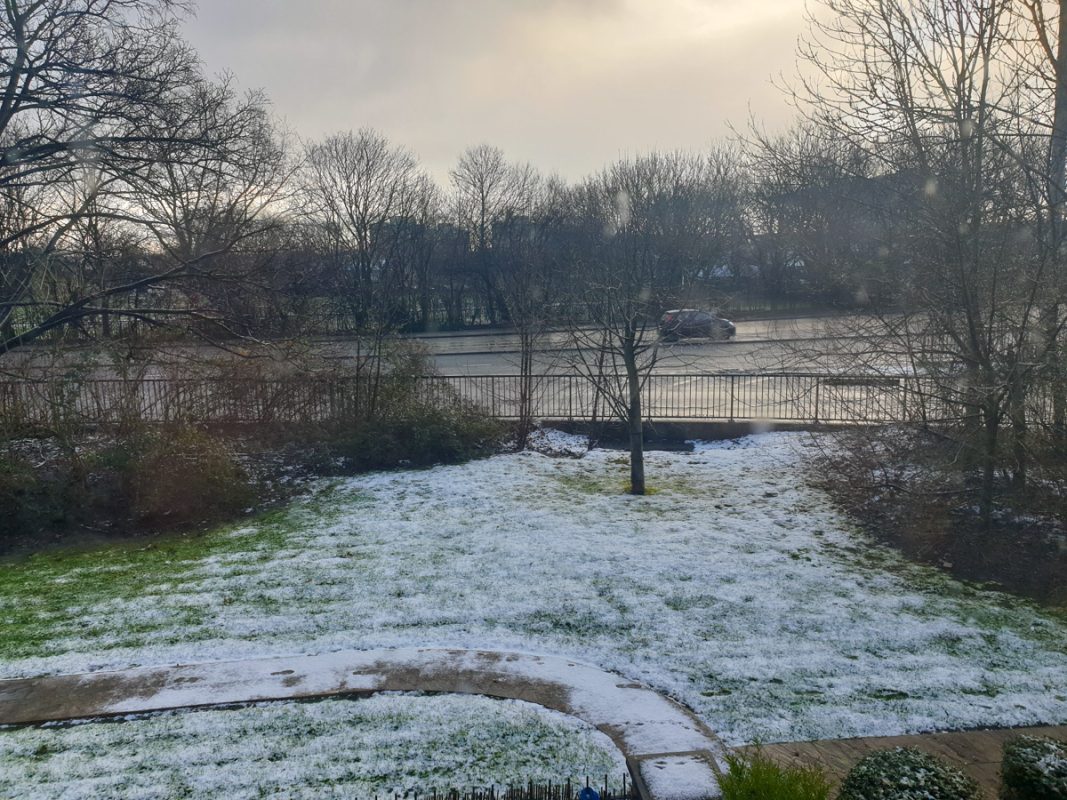
If you’re wondering where to go for snow in England, my best recommendation would be to not put too many hopes on it! However, here’s a region by region guide to where you might find the snowiest winters.
The South East and London
The South East, including London, typically sees less snow than other parts of England.
There are usually a few days of snow each winter, but this is becoming less and less frequent.
You might find there’s more snow in the home counties (the areas directly surrounding London) than in the city centre, because of the urban heat island effect.
If it is snowing in areas around London, you could always leave the city and visit them on a winter day trip. Oxford, Bath and Canterbury are all beautiful cities in the snow and all day-trippable from London.
The South West
The South West of England, a peninsula surrounded by the Atlantic Ocean and the English Channel (and where I live!) experiences the mildest winters in the country.
In fact, the mildest winters of all are on the Isles of Scilly, a collection of islands sitting a few miles from Land’s End.
Devon and Cornwall, while experiencing their fair share of frosty mornings, see less accumulated snowfall, thanks to the warming effect of the surrounding sea.
Even when the rest of the country had a lot of snow in winter 2022/3, we didn’t have any in coastal Devon!
The Midlands
Heading towards the heart of England, the Midlands tend to receive a bit more snow than the south; but still not much.
Areas like the Peak District may see more than midland cities, thanks to their altitude and rurality.
The North
It’s more snowy in the north, but please don’t think that that means a thick coating of snow from November to March!
The north has a slightly higher chance of snow and when it falls, it stays around longer. This is especially prudent in higher areas.
But snow is still very much a rarity, especially in the cities like Manchester.
Wales
Wales isn’t part of England, but it’s worth a mention as it’s right next door.
There are more mountains in Wales, so snowfall is slightly more common, particularly in Snowdonia and, on a lesser scale, the Brecon Beacons.
But again, it’s still rare!
Scotland
Again, not part of England, but if you’re heading to the UK and really want to see snow, then skip England and go straight to Scotland.
There’s a much higher chance of snowfall in the Scottish Highlands than anywhere else in the UK.
In fact, Cairngorms in Scotland has an average of 76.2 days of snow falling per year.
And there are even ski resorts in Scotland!
What are snowy days in England like?
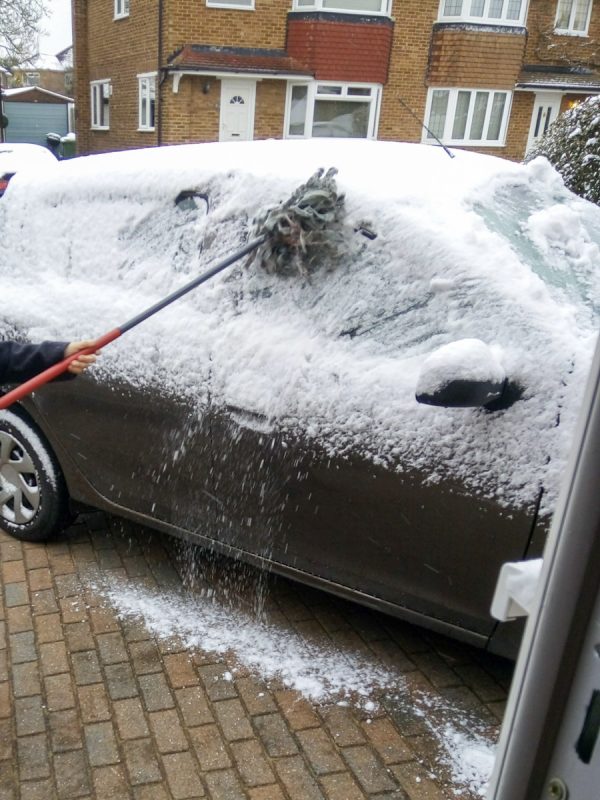
Despite the fact that we really don’t get much snow, we are comically bad at dealing with it!
As a nation, we’re more accustomed to damp drizzle than disruptive snowfall, and a light dusting of the stuff can cause a commotion.
Generally, on “snow days” there’s a disruption to public transport and schools and workplaces may be closed.
On a serious note, there’s a higher chance of car accidents; English people are not used to driving in the snow at all, and many don’t know what to do if the car skids, and how much distance to leave.
We also don’t have snow chains or anything similar.
Heavy snow can really bring the country to a halt – I remember the “beast from the east” in February 2018, when my family and I barely left the house for days!
All that being said, England’s countryside does look marvellous under a covering of snow, and building snowpeople, making snow angels and snowball fights are ever-popular (particularly because people often have days off school or work!).
Tips for England in the snow
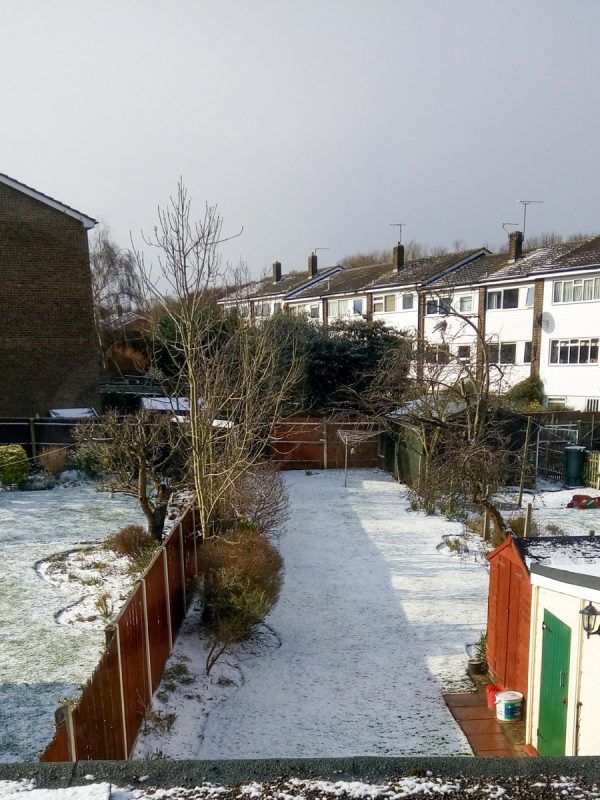
So, you’re in England in the winter months and, low and behold, it’s snowing!
Here are a few tips to bear in mind, from someone who’s spent 30 winters in England!
Check the news
While snow may be minimal, England isn’t well-equipped to deal with it.
So, pay attention to the news and see what’s being advised.
In particular, look for a red, amber or yellow weather warning.
I’d recommend following whatever the advisories are, even if they seem over the top!
Be careful driving
Did you see my passage about how English people can’t cope in the snow? (Ok, not all, but a lot!)
Even if you’re experienced in icy driving, be aware that there will be people on the road who aren’t.
Also, if you’re not used to cold weather driving, please be careful on any kind of icy roads, including black ice.
I wrote off my first car at age 17 when I skidded on black ice and crashed into the side of the road. Luckily, I was uninjured, but I’m doubly conscious and careful now.
Take public transport
If you’re not confident in driving, take public transport.
There will be some disruptions (it’s England in snowfall, after all!), but it’s better to be safe.
Enjoy the snow!
As snow’s so uncommon in England, make sure you go out and enjoy it!
England’s villages like the Cotswolds look especially pretty under snow, and cities like Oxford or Bath have a wonderful air about them in frosty weather, but there will be an excited spirit about snowfall anywhere.
Can you ski in England?
There are (very limited) ski resorts in the Lake District and the Pennines.
The Alps, they are not – but when there is snow, you can actually ski down them.
For the other 340ish days per year, you’ll have to resort to indoor ski centres!
There is a popular indoor ski resort in Milton Keynes called Snozone, along with various dry slopes and other indoor skiing areas throughout the country.
It’s not quite the same as soaring down snow-covered slopes in the Alps or Bulgaria though!
FAQs about England in the snow
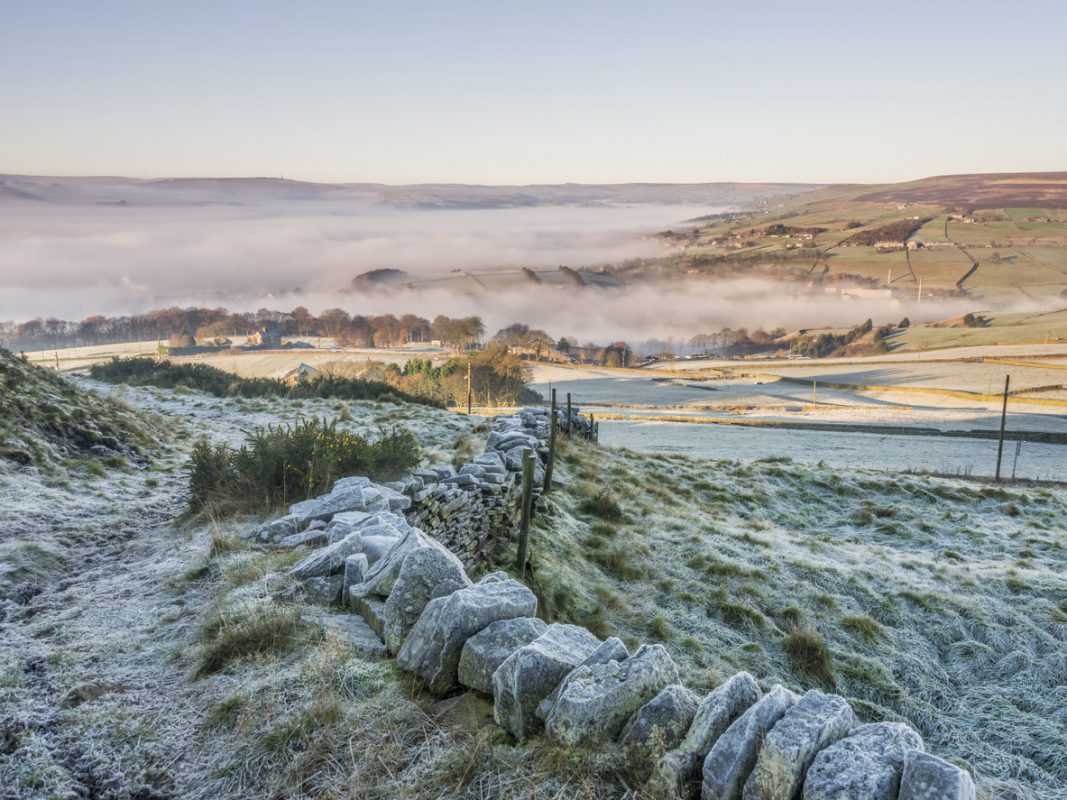
Which part of the UK has snow?
Snowfall in the UK is most frequent and substantial in the northern regions such as Scotland, the Pennines in Northern England, and the high grounds of Wales. However, snow can occur anywhere in the UK, although the South West of England and coastal areas tend to see the least.
What was the worst snow in England?
The winter of 1962-1963, known as the “Big Freeze,” is considered the worst snow in England. The country was blanketed in snow for more than two months, causing significant disruption to transport and everyday life.
Does it snow in England at Christmas?
Snow on Christmas day, often referred to as a “white Christmas,” is quite rare in most parts of England. It’s more likely to see snow during January and February, the coldest months of the year.
What month is it most likely to snow UK?
The UK is most likely to see snowfall between December and February, with January generally being the snowiest month. However, this can vary from year to year and between different regions.
Why doesn’t the UK get snow?
The UK does get snow, but not as frequently or intensely as some other countries at similar latitudes. This is largely due to the North Atlantic Drift, a warm ocean current that moderates the UK’s climate, keeping winters milder than expected.
Will it snow in December UK?
While snow is possible in the UK in December, it’s not guaranteed, especially in lower or coastal regions. The likelihood of snow increases in the northern regions and higher elevations, and as the winter progresses into January and February.
What is the coldest day in the UK?
The coldest day recorded in the UK was on 10 January 1982, when temperatures plunged to -27.2°C (-16.96°F) in Braemar, in the Scottish Highlands.
Is UK still cold in March?
March in the UK can be unpredictable, with milder spring-like days often interspersed with colder winter weather. Snow is possible, particularly in the early part of the month and in northern and high-altitude regions, but by the end of March, it becomes less likely.
Does London get snow?
Yes, London does receive snow but it’s typically not a lot and it doesn’t happen very often. London’s winters are generally cold, but not usually cold enough for sustained snowfall. When it does snow, the snow often melts fairly quickly due to the city’s generally milder temperatures and heavy traffic. However, on rare occasions, London can experience more significant snowfalls.
Which is the coldest month in the UK?
The coldest month in the UK is usually January. During this time, average temperatures can range from 0°C to 8°C, depending on the region. Scotland and the northern parts of England experience lower temperatures compared to the southern parts. However, extreme cold temperatures can occasionally dip below this range during particularly harsh winters.
Now you know about the chance of snow in England!
Please don’t plan an entire winter trip to England around snow – but if you’re there when it happens, make the most of it – it’s very much a novelty to us as well! Do check out the rest of my England posts for more tips from the country.

